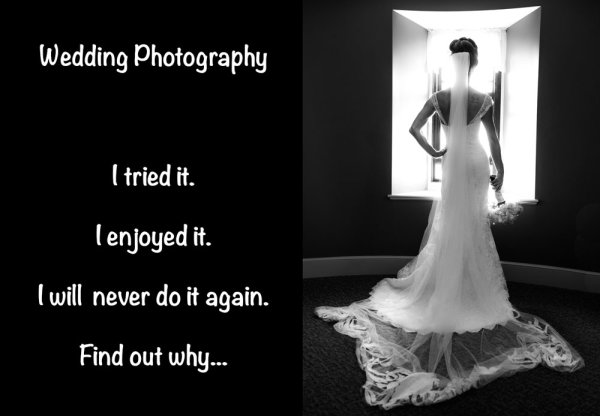What do we know about the Panasonic S1H?
Panasonic has announced the development of the S1H: a full-frame counterpart to its video-focused GH series.
The company has revealed a handful of specs about the forthcoming camera (due in the second half of 2019 for around $ 4000), from which we can draw some interesting conclusions.
Published specs:
- 6K 3:2 capture at 24p
- 16:9 5.9K capture at up to 30p
- ‘Multi aspect’ recording including anamorphic 4:3 capture
- 10-bit DCI and UHD 4K capture at up to 60p
- Unlimited recording times
- 14+ stop V-Log/V-Gamut capture
- Color reproduction to match Cinema VariCam series
It’s essentially a full-frame ‘GH’
In addition to this, Panasonic has said the ‘H’ in the name represents the same qualities as the one in the GH models: a stills/video hybrid with high quality. And, if we look at the specifications, there’s a lot of overlap with the capabilities of the company’s GH5.
Panasonic says it will combine aspects from the GH-series, the full-frame S-series and its pro-level Cinema Varicam series.
It’ll almost certainly be 24MP
The most likely implication of these specs is that the camera has a 24MP sensor. While it’s theoretically possible that the chip has more than 6000 horizontal pixels and these are then downsampled to the quoted ‘6K’ resolution, this would be a challenging both in terms of computation and readout speed. It’s far more likely that it’ll be a 6000 x 4000 pixel sensor achieving the 6K 3:2 figure given.
It probably won’t be ‘multi-aspect’ in the same sense as the GH5S
Panasonic talks about the S1H offering ‘multi-aspect’ shooting, including 4:3 anamorphic shooting. But we’re not taking this as proof that it has an multi-aspect sensor, in the same way the GH2 and GH5S have.
While it’s theoretically possible the camera will have a larger-than-full-frame sensor, with the different aspect ratios cropped out to the edges of the image circle, we think it’s pretty unlikely for three reasons:
1) 24MP full-frame chips already exist and would make sense with all the other details given. 2) it would be expensive to develop or commission a dedicated oversized sensor for a relatively niche product. 3) If the 3:2 region is 6000 pixels wide, then a multi-aspect design would lead you to expect a 16:9 region with nearly 6.3K resolution, not the 5.9K quoted.
It’s not impossible, but we think it’s pretty unlikely.
The 60p video will probably come from a Super35 crop
If the camera can only shoot 5.9K (ie full-sensor width), video at up to 30p, then it must either pixel bin, line skip or crop to achieve a rate faster than this. A roughly 6000 x 4000 pixel sensor would yield a roughly 4000 x 2250 APS-C region, which would make sense (this is what the S1 does).
The S1 video upgrade (SFU2) raises the bar
The DMW-SFU2 upgrade for the S1 raises the expectations of what the S1H will be able to do.
Panasonic had already said that the $ 200 SFU2 upgrade would add 10-bit, 4:2:2 150Mbps full-width 4K capture and full V-Log implementation, but the announced specs go further than this. It not only lifts the 29:59 recording limits and enables 10-bit 4:2:2 output of the camera’s 4K 60p footage, over HDMI.
More than this, it adds GH5-like video features such as waveform display, the ability to upload LUTs for a corrected preview, and the ability to limit the recording to industry-recognized ‘safe’ output (giving a choice of 0-1023, 64-940 or 64-1023, to match different workflows).
These additions are likely to hint at the minimum capabilities of the S1H: with it being safe to assume the inclusion of waveforms. Given the S1H’s anamorphic capture capabilities, it’s also likely that it’ll gain the GH5’s ability to present ‘de-squeezed’ playback of anamorphic footage as well as on-screen indicators of the output dimensions.
The body will resemble, but not be shared with, the S1 and S1R
Panasonic says the S1H will look similar to the S1 and S1R but won’t share the same body Instead the company implied it would be slightly larger. The early imagery shows a camera that’s slightly taller than the existing bodies.
This raises the likelihood that the S1H is essentially an S1 will more processing power and the improved heat dissipation that this would need.
But beyond that, the capabilities look remarkably similar:
| |
Panasonic S1
(with paid SFU2 upgrade) |
Panasonic S1H |
| Pixel Count |
24MP |
24MP* |
| 30p capture |
Full-width 4K downscaled from 6K |
Full-width 6K |
| 60p capture |
UHD from Super35 region |
DCI or UHD from Super35 region* |
| Other aspect ratios |
– |
3:2 6K at up to 24p |
| In-body stabilization |
Yes |
Unknown |
*logical assumptions, based on information provided.
What will the S1H offer over an upgraded S1?
The limited details we have of the S1H suggest it may be based on similar hardware to the S1, though perhaps with a more powerful processor (or the same processor running faster, with some means to cool it).
What is clear is that Panasonic thinks these differences will be worth at least a $ 1300 premium over the cost of the S1 and SFU2 upgrade. The company says it’ll be a product aimed at pro videographers and cinematographers, rather than the S1, which is described as being a good fit for wedding photographers who are also looking to deliver video.
So, what might the S1H offer to justify this price-hike (and the creation of a whole new model)?
Full resolution output
The Panasonic S1 creates its 4K footage from 5.9K capture, but we’re assuming Panasonic means that the S1H won’t downsample to 4K, when it says the S1H will shoot 5.9K.
The camera’s 6K 3:2 mode is likely to essentially an ‘open gate’ mode, shooting a larger area than the final shot, giving scope for cropping, re-positioning, rotating or stabilizing the footage. To achieve the full benefit of this, the camera would need to output its 6K capture at 6K.
Likewise, we’d expect the camera’s ‘5.9K 16:9’ footage to be retained at full resolution. For a professional workflow, this greater detail would provide some flexibility to crop in post while still maintaining true 4K resolution could be the difference between a primary camera and a secondary ‘B’ camera, and a major selling point over the S1.
Higher bitrates?
Even with the paid video upgrade, the Panasonic S1 can only shoot video at up to 150Mbps: a long way short of the 400Mbps capabilities of the GH5 and GH5S. This seems like the most obvious added extra to include in the camera.
The GH5 and GH5S already show that Panasonic can write 400Mbps (50 MB/s) to the latest V90-rated SD cards, which is not necessarily utilized in the S1.
There’s also the possibility that the S1H will support the Micro P2 standard of cards, used elsewhere in Panasonic’s VariCam range. These look like standard SD cards but use a different write method with greater data integrity. Adding P2 support would boost cross-compatibility with VariCam cameras.
Regardless of memory format, we think higher bitrate capture is a near certainty.
ProRes-compatible Raw output?
Also possible is that Panasonic has been working on a way to deliver the sensor’s Raw output (in a manageable bit-depth) across the HDMI port, to allow the potential for ProRes Raw or CinemaDNG Raw capture using an external recorder.
Nikon has rather stolen a march on the rest of the photo industry by promising Raw video output from the Z6. Raw video hasn’t been universally adopted, as a result of the storage and processing demands that it imposes on the workflow. However, the ProRes Raw format offers clever-enough compression options that it becomes easier to adopt. Panasonic may already looking ahead to Raw becoming format of choice in the industry. We’d rate this as 50/50.
Industry-standard connectors
The hint of a slightly larger body makes SDI, micro XLR or more pro-friendly connectors a possibility. However, historically Panasonic has preferred to offer these through a series of adapter add-ons (such as the XLR-1 adapter) that can be compatible with a number of cameras, so we think this is pretty unlikely.
Fixed sensor?
The company was distinctly tight-lipped when we asked whether the S1H would be image stabilized. At the time of the GH5S launch, the company claimed that a fixed sensor works better with external stabilization system (though it’s equally true that the GH5S’s sensor is so big that there’s limited scope for moving it around within the image circle of Micro Four Thirds lenses).
It’s possible that this greater gimbal and steadicam friendliness, combined with the improved heat management of being able to attach the sensor to a heat sync would push the S1H towards using a fixed sensor. That would also explain its existence as a distinct model, since most photographers would prefer to have in-body IS.
We’d rate this one as 50/50, too.
It’ll be fascinating to find out
At this point we can only speculate but, if Panasonic thinks it can charge an extra $ 1300 for the S1H, then they must be pretty confident about the value proposition it’ll offer.
We’d expect Panasonic to hold onto the precise details of the S1H until nearer its autumn/fall release. We’d also expect them to hold some surprises back, to really catch the industry’s attention.
Articles: Digital Photography Review (dpreview.com)




























You must be logged in to post a comment.